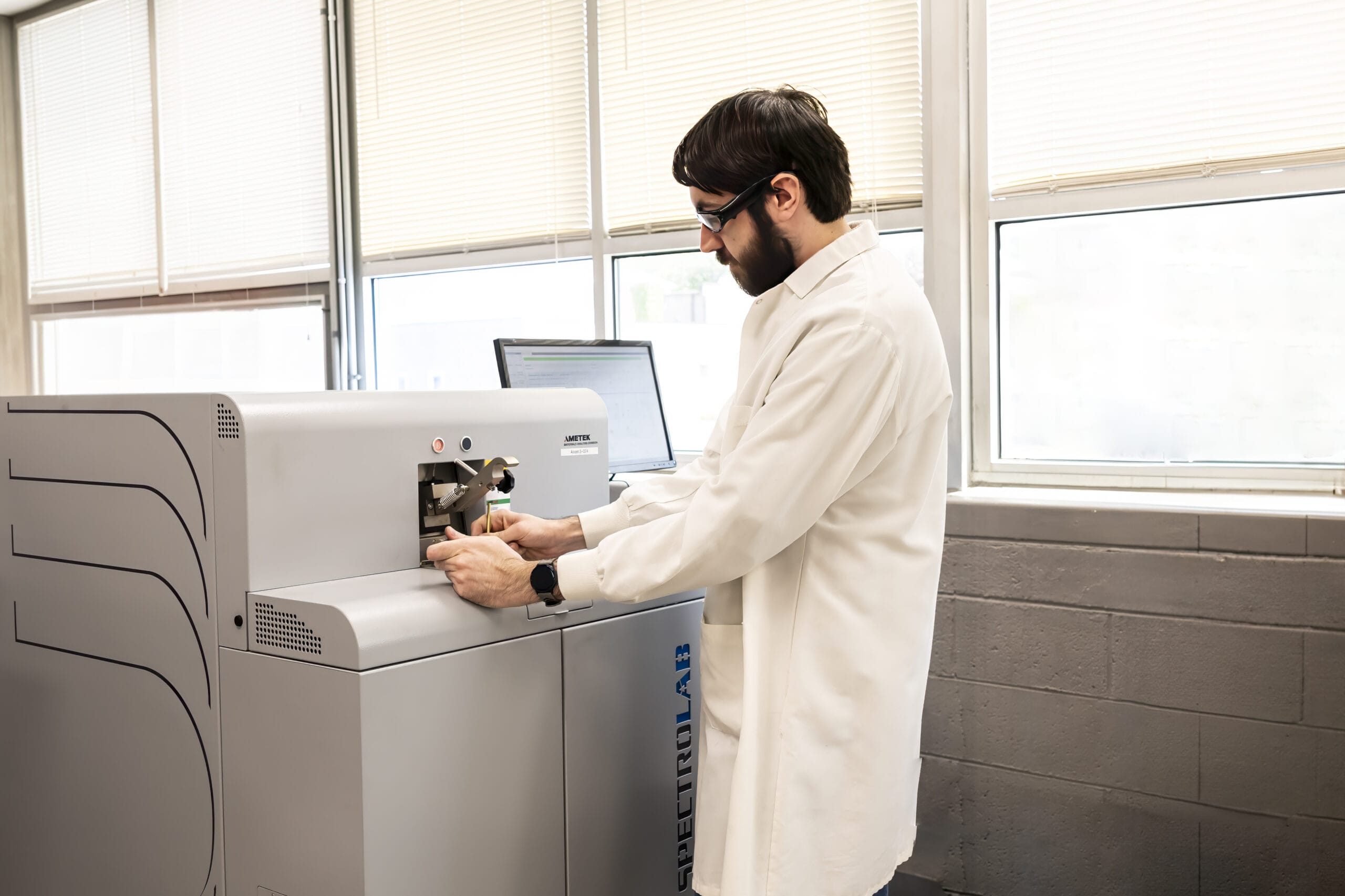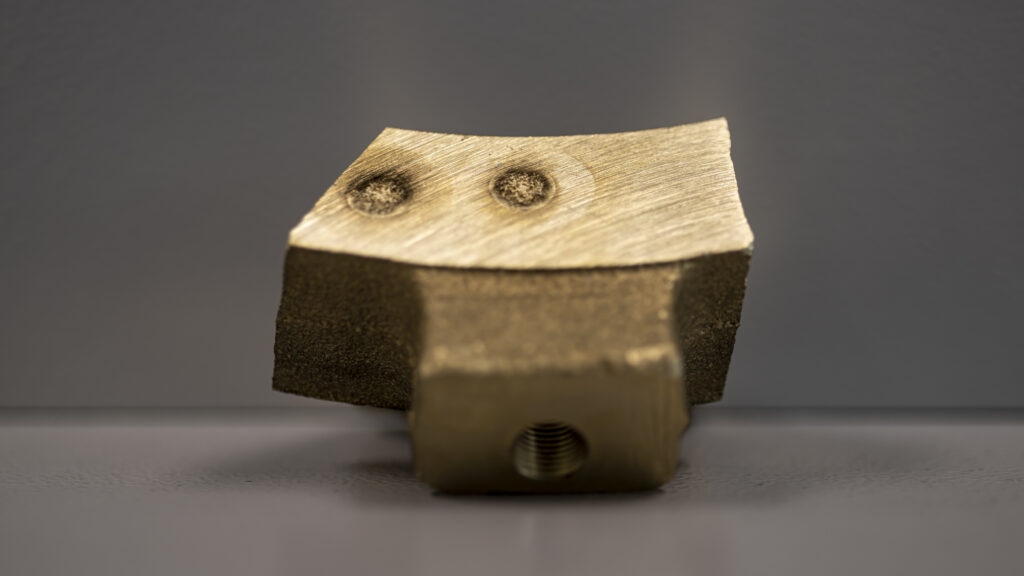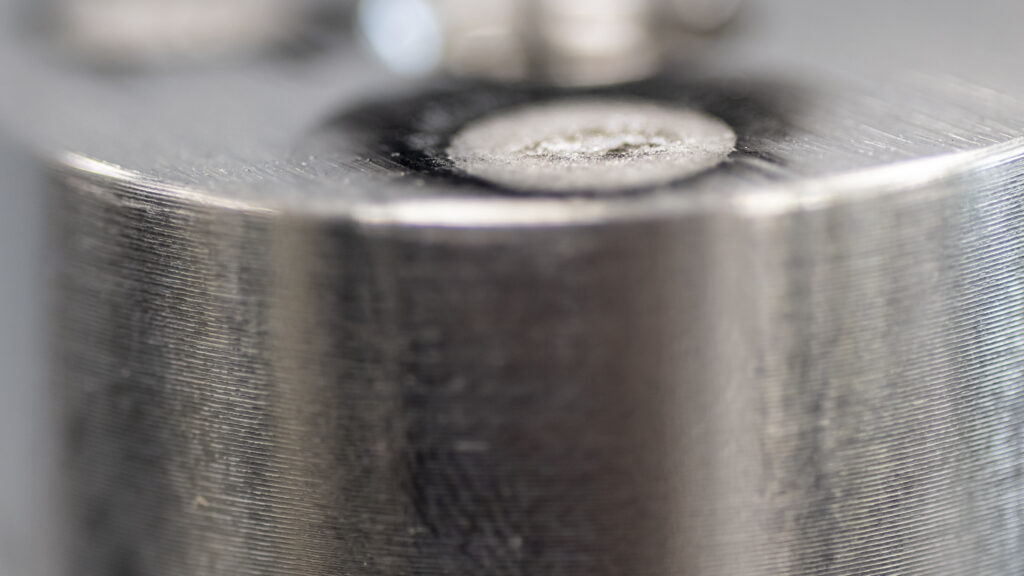
Chemical Analysis
Optical Emission Spectroscopy from SGS MSi
As a leader in metal chemical analysis, we know that you require the highest standard of alloy determination through Spectrographic Analysis
Spectroscopy Chemical Analysis
Optical Emission Spectroscopy is the measurement of elemental wavelengths by “sparking” the material. A metallic sample is placed on the unit, and the machine creates a plasma burn on the surface of the sample. The compositional elements are excited through the burn process and give off different wavelengths of light. Each separate element’s wavelength is read by the Spectrometer and reported for Alloy Determination.
SGS MSi has the capability to perform metal analysis on samples that are .5” x .5” x .02” or greater. Samples are prepared by grinding to a flat surface. We can perform testing on any configuration given that it meets the size restriction and can be prepared using the sample prep methods. The test is a destructive test. A small amount of material is burned off the surface of the sample.
Typical Spectrometer results provide the weight percentages of each material down to two decimal places with capability of four decimals in certain elements
Currently our laboratory has three calibrated and certified Optical Emission Spectrometers. Collectively they are able to produce an elemental composition of most alloys of:
- Steel
- Nickel
- Stainless Steels
- Titanium
- Aluminum
- Ductile/Gray Iron
- Cooper
- Tool steels


| Sample Chemical Testing Results | |||
|---|---|---|---|
| Nickel | 14.0% | Manganese | .09 |
| Aluminum | 10.1 | Tin | .07 |
| Zinc | 9.1 | Lead | .03 |
| Silicon | 1.2 | Mercury | .03 |
| Iron | .88 | Arsenic | .02 |
| Cadminum | .04 | Copper | Remainder |
